Jingan-Tempel, Shanghai - Tickets, Öffnungszeiten, Highlights und Tipps
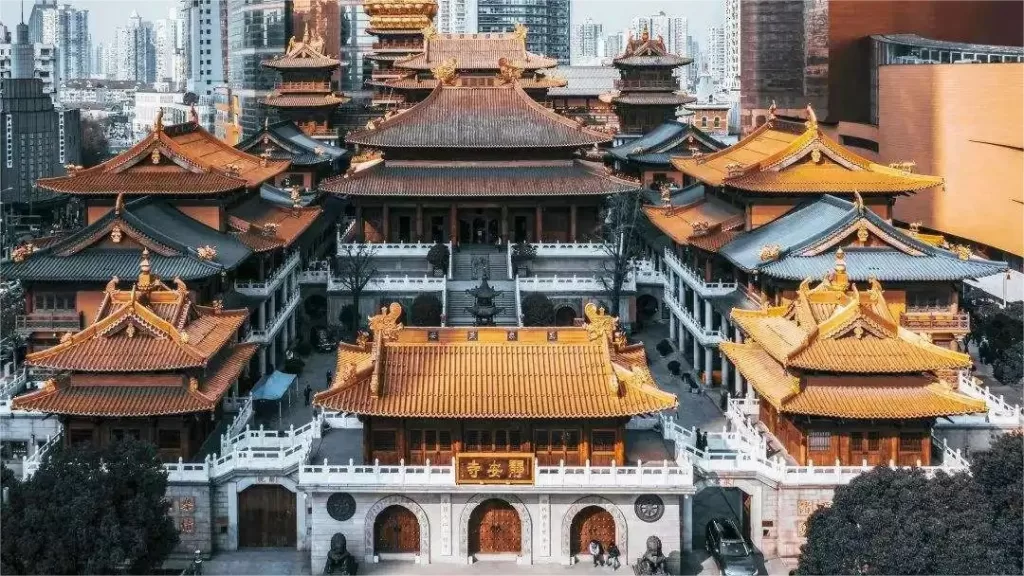

Jing’an Temple (静安寺), located in the Jing’an District of Shanghai, traces its origins back to the Sun Wu period of the Three Kingdoms in 247 AD, initially named the Hudu Chongxuan Temple. In the first year of the Xiangfu era during the Song Dynasty (1008 AD), it was renamed Jing’an Temple. In the ninth year of the Jiading era in the Southern Song Dynasty (1216 AD), the temple was relocated from the banks of the Wusong River to its present location, predating the establishment of the city of Shanghai.
Covering a total area of 22,000 square meters, Jing’an Temple follows a layout with the main structures arranged in the front, followed by a pagoda at the rear section. The primary buildings include the Mahavira Hall, Hall of Heavenly Kings, and the Three Saints Hall. This temple stands as Shanghai’s oldest Buddhist temple, surrounded by towering modern structures, creating a stark contrast with the serene and contemplative ambiance of the temple grounds.
The architectural style of Jing’an Temple blends elements of Tibetan-style temples, and within the Mahavira Hall, a silver Buddha weighing 15 tons is enshrined. Additionally, the jade Buddha in the Muni Hall is even larger than the one housed in Shanghai’s renowned Jade Buddha Temple. Jing’an Temple not only serves as a religious and cultural landmark but also as a testament to the city’s rich historical tapestry.
Inhaltsübersicht
- Basic Informaiton
- Standort und Transport
- History of Jingan Temple
- Highlights of JIngan Temple
- Vlog about Jing’an Temple
- Nützliche Tipps aus Rezensionen zusammengefasst
- Other Temples in Shanghai
Basic Informaiton
| Website | https://www.shjas.net/ |
| Die Öffnungszeiten | 7.30 - 17.00 |
| Ticketpreis | 50 RMB; No discout for children, students, or senior citizens |
| Geschätzte Dauer der Tour | 1 - 3 Stunden |
Standort und Transport
Jing’an Temple is situated in the heart of the city and is surrounded by a bustling commercial district (Huaihai Road) with numerous high-end shopping malls, restaurants, and hotels. The specific address is No. 1686, West Nanjing Road, Jing’an District, Shanghai. It is also near the Jing’an Villas, a prestigious residential community. To get there, you can choose the following ways:
Bus: Take bus 15, 20, 37, 40, 45, 57, 76, 93, 94, 113, 315, 321, 323, 327, 330, 824, 830, 838, or 927, get off at Jing’an Temple (静安寺), walk about 50 meters to the south to reach the entrance.
Metro: Take metro 2, 7, or 14, get off at Jing’an Temple station, get out of the station from Exit 1, and you will be standing right at the entrance.
Selbstfahrend: Jing’an Temple does not have its own parking lot, but you can park your car in the shopping malls nearby, and then walk there.
History of Jingan Temple
Jing’an temple was originally built in 247 AD during the Three Kingdoms period as a place to worship the statue of the Buddhist protector, Guanyin. During the Tang Dynasty, it was renamed Jing’an Temple and became a major center of Buddhist learning and practice.
The temple was destroyed and rebuilt several times throughout history due to wars, natural disasters, and political upheavals. It was rebuilt during the Song Dynasty and again in the Yuan Dynasty, when it was expanded to its current size. In the Ming Dynasty, the temple was further renovated and became a prominent center of Buddhism in Shanghai.
During the Qing Dynasty, the temple was once again destroyed in a fire and had to be rebuilt. In 1911, the temple was converted into a park by the Republic of China government, and many of its buildings were demolished or converted for other uses.
In 1983, the Shanghai government began a massive renovation project to restore the temple to its former glory. It was officially reopened to the public in 1990, and since then, it has become a popular tourist destination and a center for Buddhist worship and cultural activities.
Highlights of JIngan Temple
Jing’an Treasure Pagoda
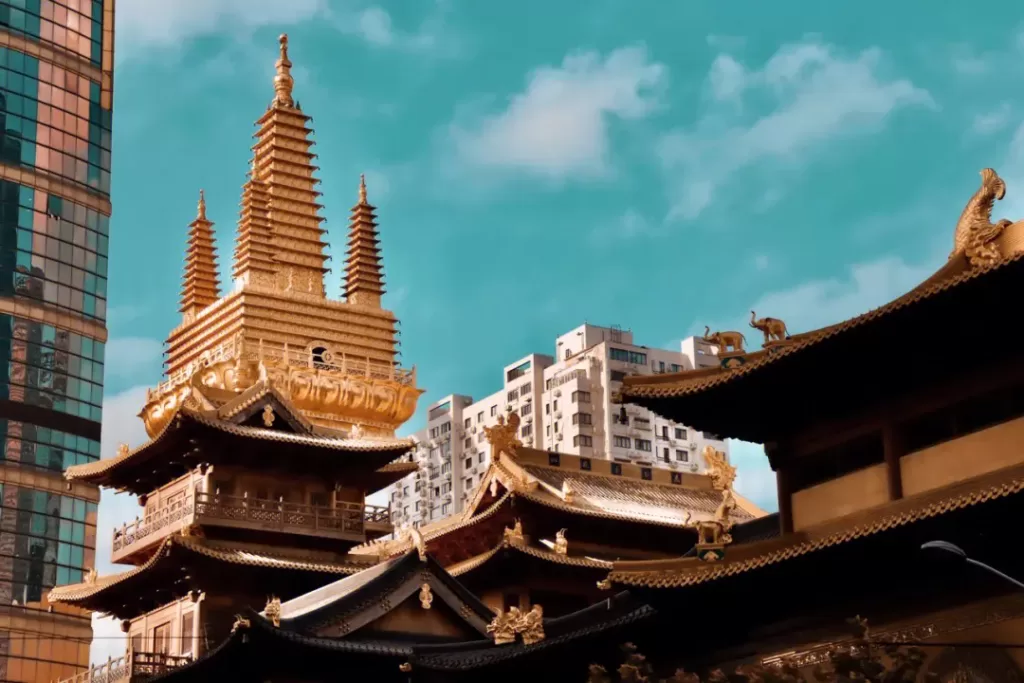
The Jing’an Treasure Pagoda is a 7-tiered square-shaped structure, occupying an area of 85 square meters within Jing’an Temple. At its pinnacle, a large central stupa is surrounded by four smaller stupas in the Tibetan architectural style. The pagoda houses 868 Buddha statues and numerous treasures associated with Tibetan Buddhism. However, access to the interior is typically restricted, only allowing visitors to appreciate its intricate design from the outside. Originally rooted in Han Buddhism, Jing’an Temple, under the guidance of Abbot Chisong, gradually incorporated elements of Tibetan Buddhism, resulting in a harmonious blend of Han and Tibetan architectural styles.
Maahavira Hall and Buddha Statues
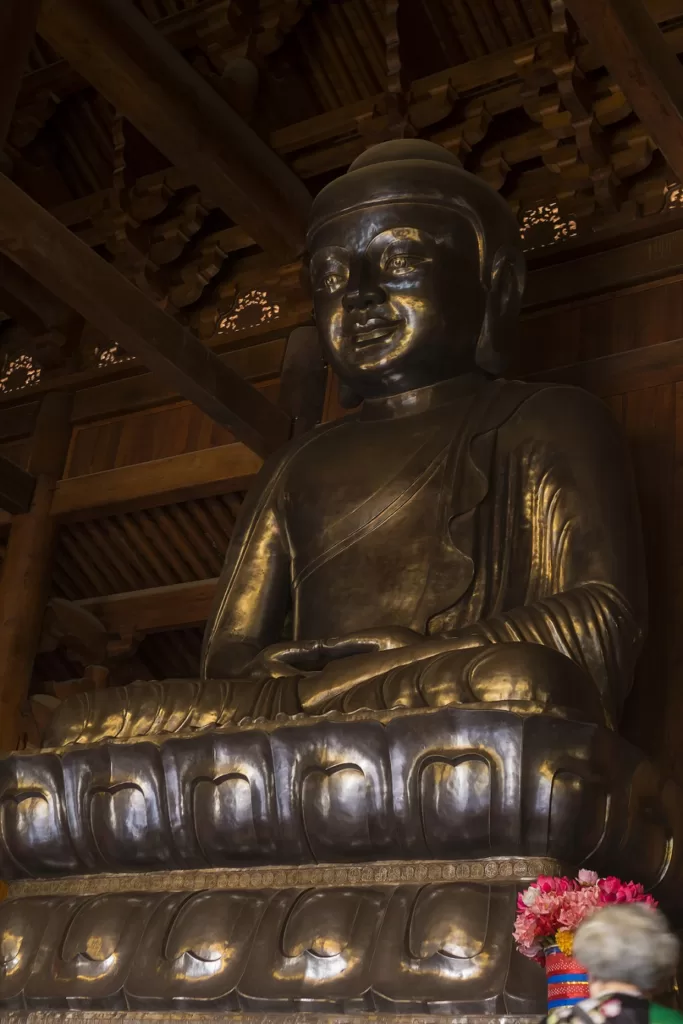
The Mahavira Hall in Jing’an Temple stands at an impressive height of 26 meters, adorned with 46 meticulously crafted teakwood pillars, each with a diameter ranging from 0.72 to 0.8 meters. The hall houses a monumental 15-ton silver statue of Shakyamuni Buddha, a masterpiece of devotion and artistry. Adjacent to the Mahavira Hall, the Guanyin Hall on the right features a 6.2-meter single-wood Guanyin statue carved from millennium-old fragrant camphor wood.
On the left, within the Muni Hall, rests an 11-ton, 3.87-meter tall seated Shakyamuni Buddha carved from a single block of Burmese white jade. This jade Buddha surpasses the renowned “treasure of the temple” in the Jade Buddha Temple in Shanghai, and its installation required dismantling part of the temple’s entrance due to its size. The newly constructed Fu Hui Bao Ding, a bronze-cast treasure vessel weighing 15.5 tons and standing at 10.23 meters, graces the central square. It is mounted on a 36-ton pedestal intricately carved from a single piece of millennia-old green stone.
Bell Tower
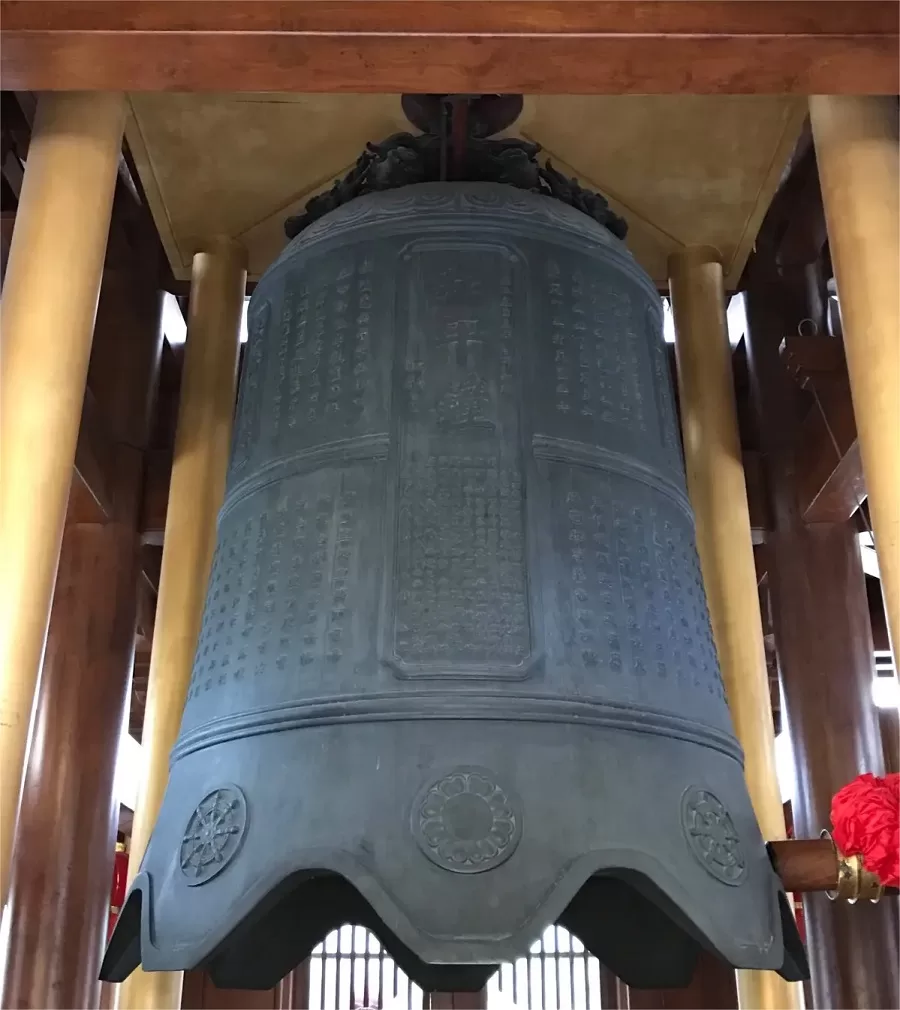
The Bell Tower at Jing’an Temple houses the Peace Bell on its second floor, a majestic creation standing 3.3 meters tall, with a diameter of 2.1 meters and a weight of 7.3 tons. This bell, cast with bronze, emits a resonant and enduring sound, echoing through the temple grounds. The lower level of the tower features the restoration of “Yongquan,” known as the “Sixth Spring under Heaven,” one of the “Eight Scenic Spots of Jing’an.” This spring, merging with water from a newly dug 156-meter-deep well, forms a fascinating spectacle. The well, measuring 6 meters deep, has a hexagonal-shaped opening crafted from a single piece of processed Jinshan stone.
Festivals
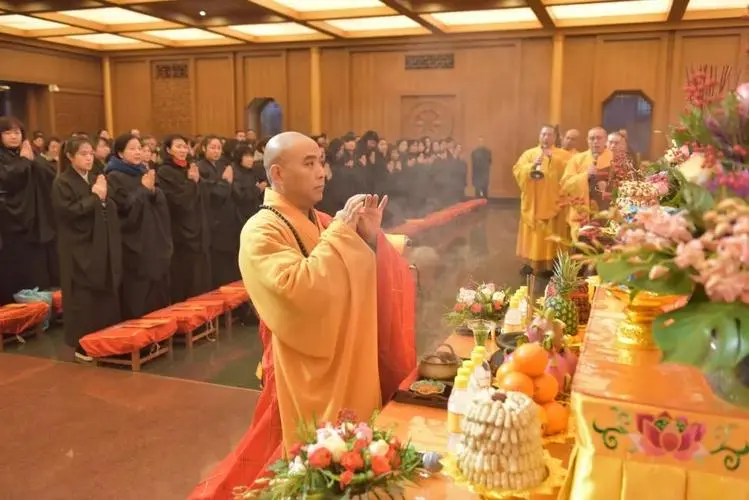
Jing’an Temple celebrates several festivals throughout the year, offering visitors a chance to experience Chinese culture and customs. One of the most important festivals is the Chinese New Year, which takes place in January or February and features colorful decorations, dragon and lion dances, and fireworks. The Lantern Festival, held on the 15th day of the first lunar month, is another important festival that features lantern displays and the eating of tangyuan (sweet glutinous rice balls). The Buddha’s Birthday, also known as the Bathing Buddha Festival, is held in April or May and involves bathing Buddha statues and performing other rituals to honor the Buddha’s life and teachings.
Vlog about Jing’an Temple
Nützliche Tipps aus Rezensionen zusammengefasst
Understanding the Temple’s Background: Jing’an Temple is the only Tibetan Buddhist monastery in the center of Shanghai. It’s essential to understand the difference between Tibetan Buddhism (Vajrayana or Tantric Buddhism) and Mahayana Buddhism. Vajrayana focuses on instantaneous enlightenment, where one can achieve Buddhahood in this lifetime through profound understanding, while Mahayana Buddhism focuses on enlightenment in future lifetimes.
Subway Line History: Legend has it that Shanghai Metro Line 2 was initially planned to pass beneath the temple. However, during construction, workers discovered an ancient spring beneath the temple with scriptures inscribed on its guardrails. Some believe that this underground spring is connected to the underworld and requires a tantric temple to suppress demonic forces. Consequently, the subway route was diverted around the temple.
Gepäckaufbewahrung: If you need to store your belongings while visiting the temple, there’s a luggage storage facility inside Jing’an Temple Metro Station, accessible from Exit 1. Operating hours are from 9:30 AM to 9:30 PM. Prices start at 10 yuan per item per day for backpacks or handbags and 20 yuan per item per day for suitcases.
Dealing with Fortune Tellers: Be prepared to encounter individuals offering to read your fortune outside the Jing’an Temple Metro Station exit. Simply ignore them.
Photography Spots: Opposite Jing’an Temple, you’ll find a pedestrian overpass where you can capture panoramic views of the temple. The night view is especially stunning, but note that the temple is only illuminated on Fridays and Saturdays. Additionally, the water pond outside Huaihai Middle Road at the entrance of Huaihai International Plaza offers a picturesque reflection of the temple.
Other Temples in Shanghai

Longhua Temple – one of the oldest temple in Shanghai

Jade Buddha Temple – unique jade Buddha Statues

Zhenru Temple – a Tang dynasty temple

Shanghai Confucian Temple – a revered cultural site
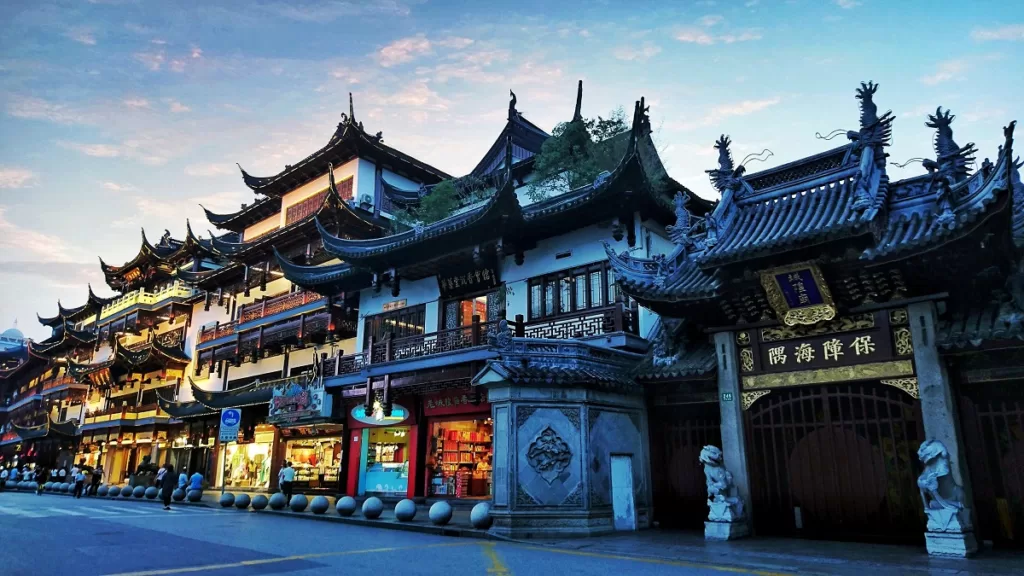
City God Temple of Shanghai – the old city center of Shanghai
Historische Stätte in Shanghai